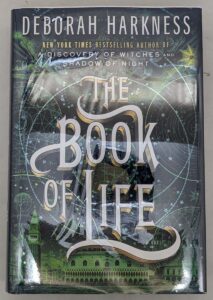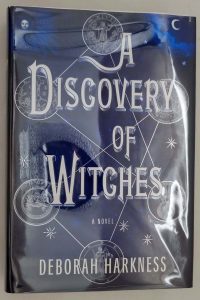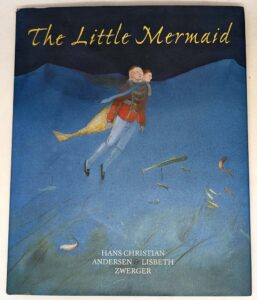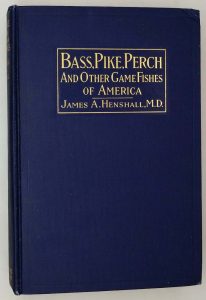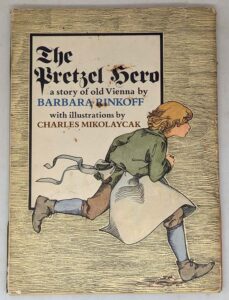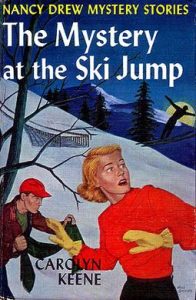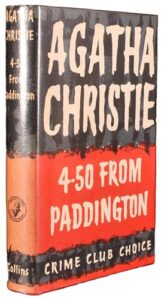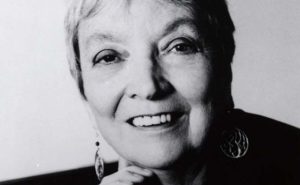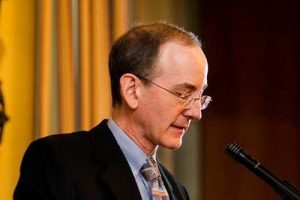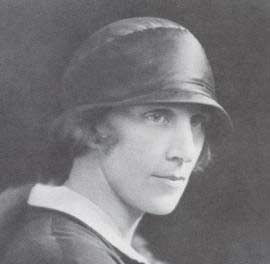Madeleine L’Engle – American author, 1918-2007.
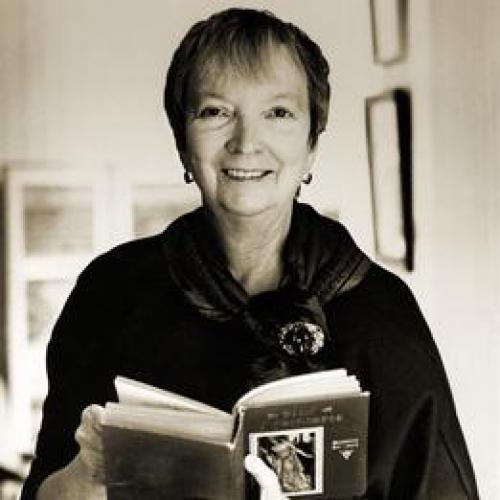
American author, 1918-2007. Madeleine L’Engle’s life is as interesting and inspiring as her books—if not more so. From the high points of winning the Newbery Medal for A Wrinkle in Time (1962), garnering a Newbery Honor mention for A Ring of Endless Light (1980), and obtaining her current position as writer in residence at the Cathedral of St. John the Divine (Episcopal) in New York City through the lows of her “dry decade,” when nothing she wrote was accepted for publication, and the wrenching agony of watching her beloved husband of forty years die from cancer, L’Engle has struggled with her often conflicting roles of wife, mother, artist, and Christian.
She has also struggled to place herself in time, both in Kronos—eternal time, in which God moves— and Chairos, “clock time,” in which man lives. It is from these struggles that her work derives, and it has been a fruitful struggle: nearly twenty books for children and nineteen for adults, including essays, poetry, fiction, and two plays. L’Engle began the struggle early, writing her first story at age six. “All about a little ‘grul,’” she says, “who lived in a cloud,” something that could be said of many of her time-traveling, space-bending, star-talking protagonists in the books she would write as an adult.
L’Engle led an isolated, if somewhat romantic, existence as the only child of sophisticated, older parents. Her father had been gassed during a stint as a war correspondent during the First World War and subsequently “spent eighteen years coughing his life away.” Her mother spent most of l’Engle’s childhood caring for her failing father. L’Engle says she felt very loved by her parents but completely apart from their world.
She created her own world as an escape and a solace, which was especially important during a series of painful school experiences—first at a “really repulsive New York-type school,” where she was labeled “the unpopular one,” then at a boarding school in England, where she was sent after her father’s ill health forced the family to relocate to the Swiss Alps. “It was absolutely splendidly horrible,” she writes. “I still get books out of it? Indeed, her awkward, intense, oddly brilliant heroines are not unlike the author’s descriptions of herself. Faith and family are two important themes in her work, as they are in her life: “My own lonely childhood is very likely the reason why family is so important to me—my own present family of children and grandchildren and the families in my stories.”
Her first book to be published to wide acclaim was Meet the Austins (1960), a family story in the classic mold: The large, noisy, happy Austin family teaches unhappy orphan Maggie the meaning of life and love. This book drew heavily on L’Engle’s own life at Crosswicks, the Connecticut country home where she and her husband, actor Hugh Franklin, and their three children retreated in the 1950s, the period the author terms her dry decade.
After modest initial success as a young author fresh out of Smith College—three books and one play published—she was unable to get one piece published for nearly ten years: “The only thing I was selling during this decade was stuff from the store,” the store being the general store she and her husband bought, renovated, and ran to support their young family. The publication of Meet the Austins ended the drought and established two of her three most important themes: a distinctly spiritual element in the lives of her protagonists, explicitly Christian in most of her books, and a strong belief in the healing power of love, most significantly the love between family members.
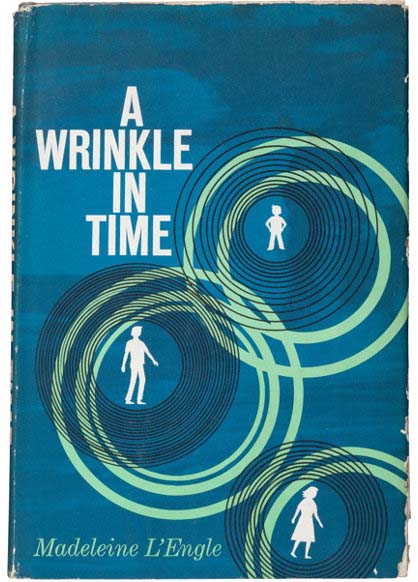
The third element in L’Engle’s thematic trinity, the world of scientists and scientific exploration, makes its appearance in L’Engle’s next work, A Wrinkle in Time, in which a physicist’s large, cozy family battles Evil in order to save their father and their world. Myopic, coltish Meg Murry and her precocious little brother Charles Wallace join forces with three delightful entities—Mrs. Whatsit, Mrs. Who, and Mrs. Which—to save their scientist father from the dutches of IT, a giant pulsating brain that wishes to control all thought and action.
At once a science-fiction story, a philosophical meditation on the nature of Evil and Love, and a coming-of-age novels Wrinkle broke new ground in what was considered appropriate for young readers. Rejected by several publishers for being too complex, this title has amply proven L’Engle’s belief that “children are excited by new ideas” and has been credited with bringing science fiction into the mainstream of children’s literature. This is L’Engle’s best work, with deft, appealing characterizations and a well-crafted plot balancing the strongly stated thematic elements that often overwhelm her later work. Wrinkle has received the highest critical acclaim in a career that has been liberally rewarded with praise and condemnation.
In the “Time Fantasy” series L’Engle follows the Murry family, most notably in A Wind in the Doer (1973) and A Swiftly Tilting Planet (1978), which won the American Book Award. All of the Murry family books have elements of fantasy and science fiction to link them, as well as an apocalyptic struggle between Good and Evil. The Austin family saga, on the other hand, which the author has continued in books such as The Moon by Night (1963) and The Young Unicorns (1968), are reality-based, coming-of-age novels in which the adolescent protagonist is tempted by the seductive wiles of cynicism and despair—often personified by a love interest—but is ultimately won over to the side of good by the warmth and decency the Austins exhibit.
It is L’Engle’s thematic concerns that are her forte, as well as the aspect of her work that has brought on the most controversy. Her ability to give face and voice to such abstract ideas as Love, Good, Despair, and Evil and to make the struggle among them believable in her characters’ lives are what make her work timeless and important to generations of readers. L’Engle understands that it is of these things that adolescent angst is made, not simply immediate concerns such as pregnancy, aids, and gang violence.
Madeleine L’Engle places her characters and her readers in a larger context, one in which individual actions have universal implications, or what the author calls “the butterfly effect”: the death of a butterfly has an effect in a galaxy light-years away. But it is this dominating thematic element in her work that has caused some critics to term her books didactic and the religious implications of her themes that have caused some schools to remove her books from library shelves for their “anti-Christian” message.
For while some may find her overt Christianity an artistic detriment, fundamentalist Christian groups have found it “contrary to Biblical teaching.” For the author, who has several books of essays published by Christian presses, this sort of thing is nonsensical: “People are reading with a list of words, they’re not reading for content.” Well into her fourth decade of writing, L’Engle is still going strong, continuing to “listen to her work” and write about what she most strongly believes in: a universe of randomness and chance but one in which everything is completely interdependent. “To hurt a butterfly,” she says, “is to shake the universe.”
Sarah Guille Kvilhaug
Source: Children’s Books and their Creators, Anita Silvey.
Madeleine L’Engle Books
Publication Order of Vigneras Books
- The Small Rain (1945)
- Prelude (1968)
- A Severed Wasp (1982)
Publication Order of Camilla Dickinson Books
- Camilla Dickinson (1951)
- A Live Coal in the Sea (1996)
Publication Order of Austin Family Books
- Meet the Austins (1960)
- The Moon by Night (1963)
- The Twenty-Four Days Before Christmas (1964)
- The Young Unicorns (1968)
- A Ring of Endless Light (1980)
- The Anti-Muffins (1981)
- Troubling a Star (1994)
- A Full House (1999)
Chronological Order of Austin Family Books
When reading this series in chronological order, Troubling a Star and The Anti-Muffins are reversed.
Publication Order of Time Quintet Books
- A Wrinkle in Time (1962)
- A Wind in the Door (1973)
- A Swiftly Tilting Planet (1978)
- Many Waters (1985)
- An Acceptable Time (1989)
- Intergalactic P.S. 3 (2018)
Publication Order of Time Quintet Graphic Novels
- A Wrinkle in Time (2012)
Publication Order of O’Keefe Family Books
- The Arm of the Starfish (1965)
- Dragons in the Waters (1976)
- A House Like a Lotus (1984)
Publication Order of Crosswicks Journal Books
- A Circle of Quiet (1971)
- The Summer of the Great-Grandmother (1974)
- The Irrational Season (1976)
- Two Part Invention: The Story of a Marriage (1988)
Publication Order of Genesis Trilogy Books
- And It Was Good: Reflections on Beginnings (1983)
- A Stone for a Pillow: Journeys with Jacob (1986)
- Sold into Egypt: Joseph’s Journey into Human Being (1989)
Publication Order of Standalone Novels
- Ilsa (1946)
- And Both Were Young (1949)
- A Winter’s Love (1957)
The Love Letters (1966) - Dance in the Desert (1969)
- The Other Side of the Sun (1971)
- The Weather of the Heart (1976)
- Certain Women (1992)
Publication Order of Short Story Collections
- Lines Scribbled on an Envelope and Other Poems (1969)
- Ladder of Angels (1979)
- The Sphinx at Dawn: Two Stories (1982)
- A Cry Like a Bell (1987)
- WinterSong: Christmas Readings (1996)
- Miracle on 10th Street and Other Christmas Writings (1998)
- 101st Miracle: Early Short Stories (1999)
- The Ordering of Love: The New and Collected Poems of Madeleine L’Engle (2005)
- The Moment of Tenderness (2020)
Publication Order of Standalone Plays
- The Journey with Jonah (1967)
Publication Order of Picture Books
- Moses, Prince of Egypt (1998)
- The Other Dog (2001)
Publication Order of Non-Fiction Books
- Prayers for Sunday (1974)
- Everyday Prayers (1974)
- Walking on Water: Personal Reflections (1980)
- Trailing Clouds of Glory: Spiritual Values in Children’s Literature (1985)
- From This Day Forward (1989)
- The Glorious Impossible (1990)
- The Rock That is Higher: Story as Truth (1993)
- Anytime Prayers (1994)
- Penguins and Golden Calves: Icons and Idols in Antarctica and Other Spiritual Places (1996)
- Glimpses of Grace: Daily Thoughts and Reflections (1996)
- Friends for the Journey (1997)
- Mothers and Daughters (1997)
- Mothers and Sons (1999)
- My Own Small Place: Developing the Writing Life (1999)
- A Prayerbook for Spiritual Friends: Partners in Prayer (1999)
- Bright Evening Star: Mystery of the Incarnation (2001)
- Madeleine L’Engle Herself: Reflections on a Writing Life (2001)
- The Joys of Love (2008)
